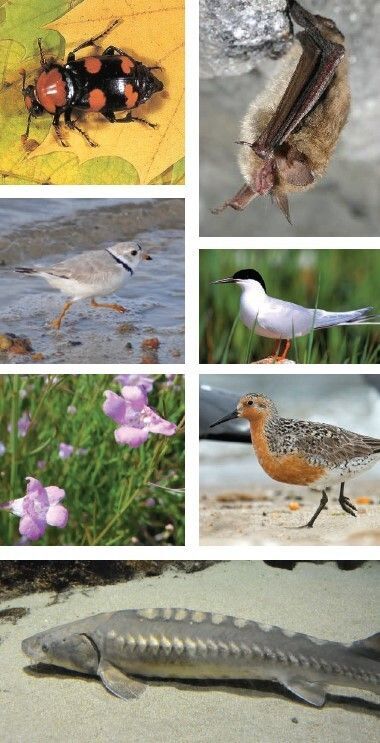The Endangered Species Act: 50 Years of Protecting Biodiversity in Rhode Island
By Dr. Scott Ruhren, Senior Director of Conservation
In 1973 a federal conservation law was created to address the crisis of species extinction. The United States Congress created the Endangered Species Act, ESA or “the Act,” to “provide a means whereby the ecosystems upon which endangered species depend may be conserved to provide a program for the conservation of such species.” Endangered species are defined as species likely to go extinct in their entire range because of human and/or natural causes. Threatened species are not as close to extinction but are at significant risk.
-
Species are listed for many reasons, but often their declines are the result of human impacts such as habitat loss and introduction of invasive species. Over the five decades there have been many successful examples of the strength of the Act. Success stories that affect Rhode Island include the Bald Eagle and Peregrine Falcon.
Still the work continues. More than 1300 species have been added to the ESA list but there is hope. Amazingly, 99% of species listed have been saved from extinction. The US Fish and Wildlife Service (USFWS) and National Oceanic and Atmospheric Administration (NOAA) oversee the protection of species in the ESA and regulate and enforce the law.
Currently, in Rhode Island there are ten federally listed species. American burying beetle, hawksbill sea turtle, leatherback sea turtle, Roseate Tern, and shortnose sturgeon are considered “Endangered,” while Northern long-eared bat, Red Knot and Piping Plover are “Threatened.”
Endangered plants are sandplain gerardia and the threatened small whorled pogonia, an orchid.
Some rare Rhode Island natives may be protected by state action but not be federally rare and not protected by ESA. These include northern diamondback terrapin, eastern spadefoot toad, American ginseng and ringed bog haunter, a dragonfly.
Often conservationists are reticent to advertise the locations of rare species to protect their vulnerable populations.
Historically, plants and vertebrate animals have received the most attention under the ESA. Invertebrates such as mollusks and arthropods have not, despite many species at risk. There is a current effort to list the American bumble bee, now extinct in Rhode Island, and the monarch butterfly has also been suggested.
-
Clockwise from top left: American Burying Beetle, Northern Long-eared Bat, Roseate Tern, Red Knot, Shortnose Sturgeon, Sandplain gerardia, Piping Plover.
The Audubon Society of Rhode Island has been instrumental in protecting these species through direct action as well as by saving habitat that supports them. It is an ongoing effort strengthened by the ESA.


















